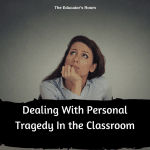 We have all seen it. The student who walks to his own drumbeat, different colored hair, withdrawn, hoodie up, possibly small and lanky, a little more feminine than most guys his age. maybe a few piercings or tattoos. He is silently screaming, “Look at me!” without saying a word. And other students do see him. And talk about him. And say awful things about him.
We have all seen it. The student who walks to his own drumbeat, different colored hair, withdrawn, hoodie up, possibly small and lanky, a little more feminine than most guys his age. maybe a few piercings or tattoos. He is silently screaming, “Look at me!” without saying a word. And other students do see him. And talk about him. And say awful things about him.
You hear it.
Or the girl who wears the baggy pants and keeps her hair short. The ‘tomboy.’ The girl who doesn’t quite fit the stereotypical ‘girl’ mold, but doesn’t fit in as a guy’s girl. She hangs back, isolated. We hear what others say about her too. We know the assumptions they make. We know the ugly titles they give her. We know that she hears them too.
Or what about those kids who don’t have a physical ‘stereotype’, yet don’t conform to the other groups we see form in our schools? The awkward kids, the introverted students who aren’t quite sure where, or even if, they fit in.
Kids are constantly searching for their niche. Some of them know where they belong right off. Others may not figure it out until later in life. Whether they are trying to seek attention by their outward appearances or trying to blend into the woodwork, they need to know that there are people who are pulling for them and accepting them just they way they are with no strings attached.
All of these kids endure awful name-calling, rumors, threats and taunting. We know there is a hierarchy in the social dynamics of all ages of kids. Those at the top want to stay there and usually maintain that coveted spot because everyone else is afraid of them. The ones at the very bottom are fodder for everyone above at the cost of their self-esteem. We hear the assumptions of sexual identification. We hear the whirs of the rumor mill. We literally see these kids torn to shreds before our eyes, even if they don’t let on that they care. We know they care.
And some teachers even participate in these types of activities. If we pass a deaf ear or a blind eye to students tearing each other down, we have participated.
The hats we wear are many, and our wardrobe continues to grow as digital devices take over socialization and the ideals of ‘family’ continues to evolve. Not only are we responsible for academics, but protecting the self-esteem and overall well-being of our students. More times than not I’m called ‘Mom’ instead of ‘Mrs. Glass,’ a title I wear proudly and am thankful that I can be trusted by my students to fill those shoes for the time that I have them during the day.
We need to make sure that we are teaching to the whole child, no matter what the age group we are responsible for. The ideas of social status and popularity, no matter what group a student is sorted into, comes at a cost to everyone.
Complacency for sexual stereotyping eats away at students bit by bit, leaving an empty shell behind. We see suicide rates soar, violence accumulate and dysfunction within the school multiply. When students see teachers take part in joining the dismantling of students, by either direct participation or simply trying to ignore what others are saying or doing, we are telling all students that these behaviors are okay. And we are showing the victim of such behavior that their worth is less than others.
We are the ultimate role models for our students. We set the precedence for what students expect from themselves. We need to constantly lead by example, whether that be in our words, actions or attitudes. Always remember the power you have. Don’t misuse that power.




